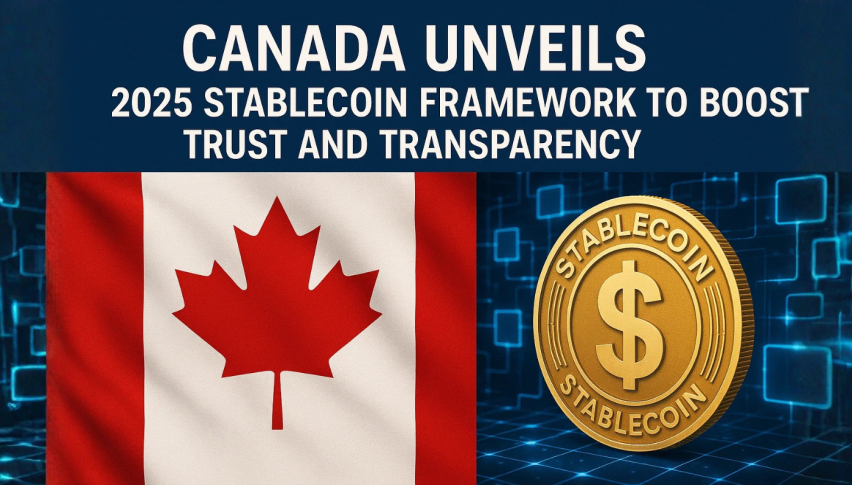Canada Unveils 2025 Stablecoin Framework to Boost Trust and Transparency
Canada has prepared a major step toward regulating stablecoins by announcing plans in its 2025 federal budget to pass laws guaranteeing...

Quick overview
- Canada plans to regulate fiat-backed stablecoins by ensuring issuers maintain complete reserves and implement robust risk controls.
- The Bank of Canada will oversee these regulations with a $10 million budget starting in fiscal year 2026-2027.
- This initiative follows the U.S. GENIUS Act and aims to enhance the speed, security, and transparency of Canada's payment system.
- Canada has decided against a central bank digital currency, focusing instead on regulating stablecoins to foster private sector innovation.
Canada has prepared a major step toward regulating stablecoins by announcing plans in its 2025 federal budget to pass laws guaranteeing fiat-backed stablecoin issuers maintain complete reserves, robust risk controls and transparent redemption rules. The action represents a sea change for Canada’s digital asset market and is similar to previous U.S. legislation.
Canada’s Plan for Stablecoin Oversight
The Canadian government intends to implement a new legal framework for fiat-backed stablecoins which are digital tokens linked to currencies such as the Canadian or US dollar, according to the budget that was made public on Tuesday. It will be necessary for issuers to:
- Ensure that you have enough reserves to support issued tokens.
- Adopt reliable risk management techniques.
- Protect financial and personal information.
- Give users clear redemption guidelines.
The Bank of Canada will play a key role in supervising such efforts with a $10 million contribution spread over two years beginning in fiscal year 2026–2027.After that the fees from stablecoin issuers governed by the Retail Payment Activities Act will pay the $5 million yearly oversight costs.
According to officials the objective is to improve the speed, security, and transparency of Canada’s payments system.
Taking the U.S. Lead
This decision was made four months after the US passed the historic GENIUS Act, which established regulations for stablecoins. Global norms are already being influenced by the U.S. framework which is putting pressure on nations like Canada to adopt similar policies.
The new legislation is part of a larger payments modernization program designed to improving Canadians’ online transactions according to authorities even though the Canadian government has not yet announced a timeframe for its introduction.
Lucas Matheson, CEO of Coinbase Canada, praised the action saying CBC that the changes will “change how Canadians interact with money and the internet forever.”
🇨🇦 Canada just made a big step forward.
Today’s federal budget includes new guidance on stablecoin regulation, signaling progress toward embracing faster, cheaper, and borderless payments.
With 60,000 advocates strong, Stand with Crypto Canada will continue to be a driving… pic.twitter.com/C0ZiO3GLsR
— Stand With Crypto Canada 🇨🇦 (@StandWCrypto_CA) November 4, 2025
Institutional Demand Driving Adoption
One of the fastest-growing areas of digital finance is stablecoins. The U.S. Treasury expects that as more financial institutions use them, the worldwide market cap which currently stands at $309.1 billion, may rise to $2 trillion by 2028.
Stablecoin-based payment methods have already been included or intentions to use them have been announced by major players like Western Union, SWIFT, MoneyGram and Zelle.
Tetra Digital, which has secured $10 million to create a digital Canadian currency, is at the forefront of the Canadian scene. The National Bank of Canada, Wealthsimple and Shopify are supporting the project which is an indication of the increasing cooperation between traditional banks and fintechs.
No Central Bank Digital Currency — For Now
It’s interesting to note that Canada shelved plans for a central bank digital currency (CBDC) in September 2024, which coincided with the effort to regulate stablecoins. Tiff Macklem the governor of the Bank of Canada at the time stated that there was “no compelling case” to issue one because the current payment mechanisms were effective.
Actually Canada seems to be concentrating on fostering innovation in the private sector under tight regulation guaranteeing stablecoins are secure, reliable and linked into the larger financial system.
- Check out our free forex signals
- Follow the top economic events on FX Leaders economic calendar
- Trade better, discover more Forex Trading Strategies
- Open a FREE Trading Account


